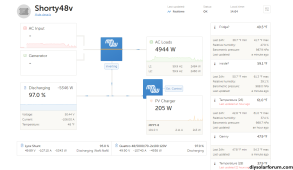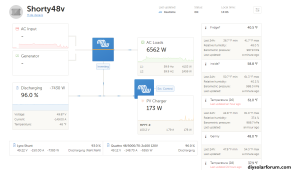Same original question still applies, is it safe for the panel or MPPT/PWM to handle that inrush current?
There simply will not be an inrush current at all.
Suppose that you use a nominal 24 volt, 300 watt solar panel, which is fairly healthy size.
The Vmp will be ~ 36 volts and Voc close to 40 volts. Ioc (short circuit current ) will be at most 10 amps from the panels into the inverter caps. These numbers are on the data sheet and on the panel's label on the back of it.
So if you just hook it up directly to the bus bar (via a fuse or breaker ) then the absolute most it can push in the circuit is 10 amps no matter how large the inverter capacitors are since a panel like that simply cannot generate more current than the Ioc (short circuit current ).
The voltage will self limit to the Voc, so roughly 40 volts after a few minutes because this is also an intrinsic self limiting capability of all solar panels. In a 24 volt system, just use a nominal "12 volt style" panel, which will self limit to ~ 22 volts. (the built in Voc of the panel )
Once the inverter caps are pre-charged to the bulk of the Vbat, then the battery BMS is much less likely to trip when you turn on the main breakers. (Turn off the solar panel connection first ) If it does, then turning the breaker off for 5 seconds and back on will usually fix the issue.
Not all solar controllers can start up with zero battery voltage but I know that the bogart can because I use them on some things. The presence or absence of a solar controller will not increase what the solar panel can deliver amps wise. The bogart self limits to 30 amps no matter the conditions if that is helpful.
You can use a much smaller panel to do this as well, it will just take a few minutes longer. All that matters is the Voc being roughly correct. For instance a 30 watt panel might self limit to an Ioc of 1 amp, so it is just a matter of patience.
In a pinch, you can even use this trick to jump start your vehicle starter battery with a solar panel as long as you use a volt meter to keep the starter battery voltage under ~14 - 15 volts.





